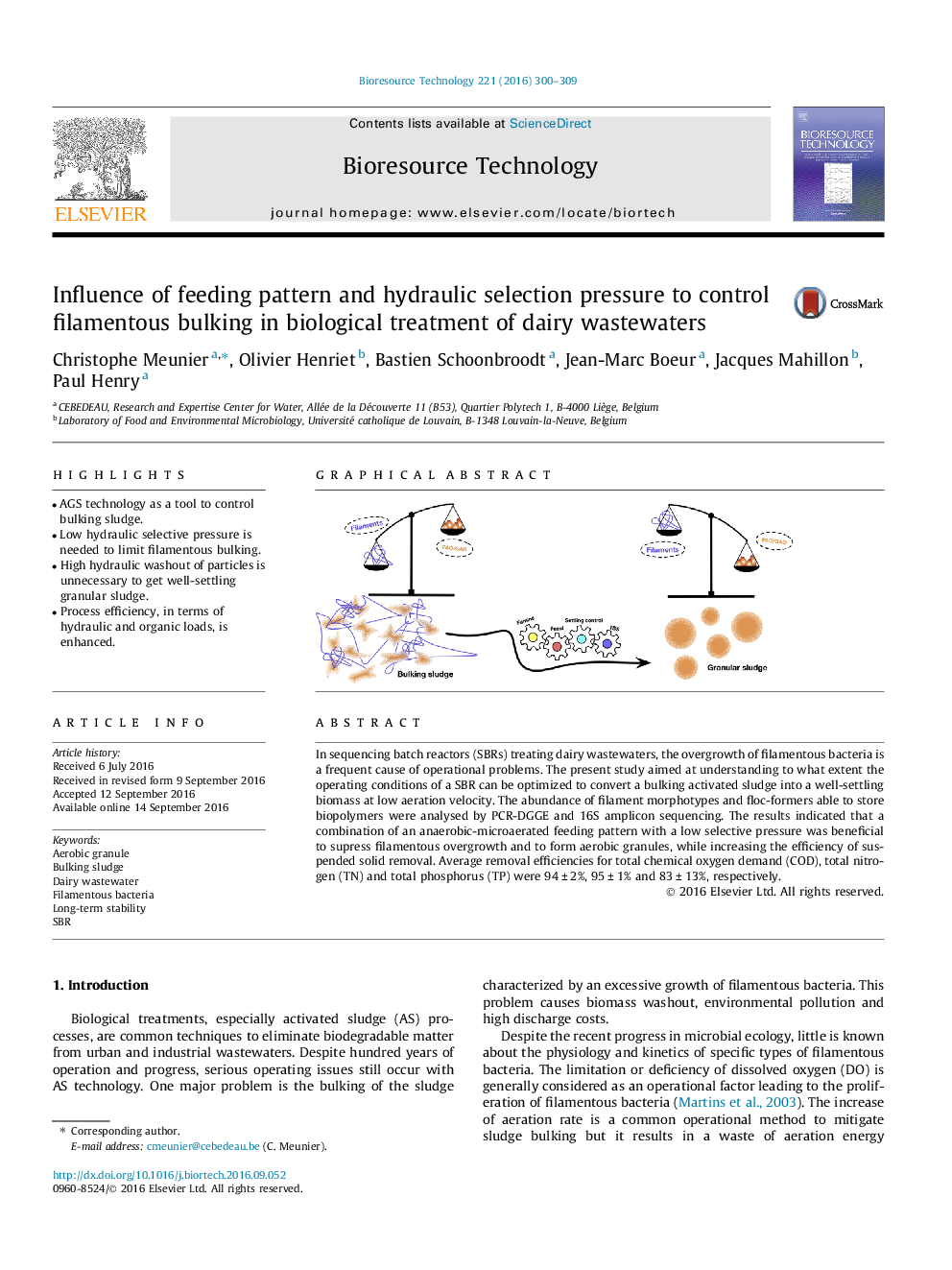| کد مقاله | کد نشریه | سال انتشار | مقاله انگلیسی | نسخه تمام متن |
|---|---|---|---|---|
| 4998046 | 1459922 | 2016 | 10 صفحه PDF | دانلود رایگان |
- AGS technology as a tool to control bulking sludge.
- Low hydraulic selective pressure is needed to limit filamentous bulking.
- High hydraulic washout of particles is unnecessary to get well-settling granular sludge.
- Process efficiency, in terms of hydraulic and organic loads, is enhanced.
In sequencing batch reactors (SBRs) treating dairy wastewaters, the overgrowth of filamentous bacteria is a frequent cause of operational problems. The present study aimed at understanding to what extent the operating conditions of a SBR can be optimized to convert a bulking activated sludge into a well-settling biomass at low aeration velocity. The abundance of filament morphotypes and floc-formers able to store biopolymers were analysed by PCR-DGGE and 16S amplicon sequencing. The results indicated that a combination of an anaerobic-microaerated feeding pattern with a low selective pressure was beneficial to supress filamentous overgrowth and to form aerobic granules, while increasing the efficiency of suspended solid removal. Average removal efficiencies for total chemical oxygen demand (COD), total nitrogen (TN) and total phosphorus (TP) were 94 ± 2%, 95 ± 1% and 83 ± 13%, respectively.
148
Journal: Bioresource Technology - Volume 221, December 2016, Pages 300-309
